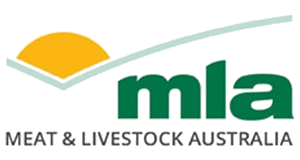14 Mar 2025
Australian Cattle and Sheep Market Update
Read full article
Cyclone Alfred Impacts Slaughter and Yardings Across Australia
The Australian livestock market continues to feel the effects of ex-Tropical Cyclone Alfred, with significant disruptions to cattle and sheep slaughter volumes and yardings. Despite these challenges, cattle prices have strengthened, and restocker interest is rising, driven by the return of domestic processors.
Cattle Market Overview
- Yardings dropped by 31,624 to 43,942 head due to weather disruptions and producers in New England holding cattle in anticipation of rainfall.
- Cattle prices rose nationally, with the Dairy Cow Indicator up 25¢ to 242¢/kg liveweight (lwt).
- Victorian prices saw a notable lift of 27¢, while Wagga producers responded positively to rainfall forecasts, pushing the Restocker Yearling Steer Indicator up 18¢.
- National average price increased by 11¢ to 364¢/kg lwt.
Sheep and Lamb Market Trends
- Trade Lamb Indicator rose 9¢ to 795¢/kg carcase weight (cwt), supported by renewed processor demand.
- Price movements varied by state: Victoria saw a slight 1¢ drop, while NSW prices lifted by 8¢.
- Heavy lambs over 30kg were in short supply, while lighter lambs increased, causing a 17¢ drop to 729¢/kg cwt.
Slaughter Statistics – Week Ending March 7, 2025
Cattle:
- Total slaughter fell by 14,116 to 133,017 head.
- Queensland saw the largest decline (13,967 head) due to processor shutdowns.
- NSW, SA, and Victoria remained relatively stable.
Sheep and Lamb:
- Combined slaughter eased by 25,618 to 699,627 head.
- Sheep slaughter dropped by 13,756 to 205,728 head, mainly in Victoria (-5,374) and WA (-11,758).
- NSW sheep slaughter increased by 2,634 head, keeping overall sheep slaughter 1.4% above the same period last year.
- Lamb slaughter declined by 11,862 to 493,899 head, with reductions in NSW (-3,685), Victoria (-1,484), and WA (-6,427).
Conclusion
Despite weather-related disruptions, the Australian cattle and sheep markets remain resilient. Rising prices and renewed processor activity are supporting market stability, while slaughter volumes reflect ongoing challenges. Producers are cautiously optimistic as rainfall forecasts and restocker demand signal potential recovery.

Read full article Share on X